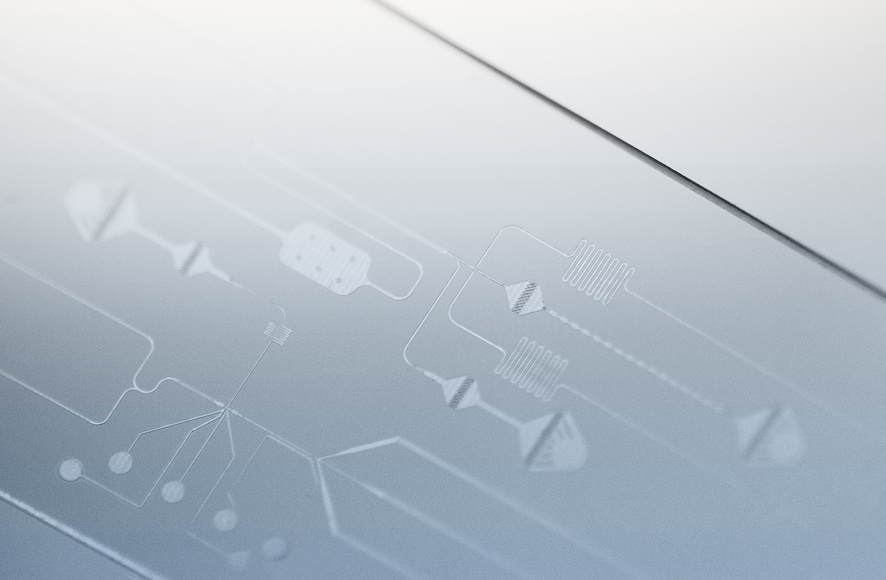We specialize in translating scientific and industrial objectives into manufacturable microfluidic solutions. Whether you're a researcher with a breakthrough idea or an industry professional developing the next generation product, we bridge the gap between scientific vision and engineering reality.
Our proprietary femtolaser-assited chemical etching technology delivers unmatched precision in micromanufacturing, enabling breakthrough solutions across the life sciences spectrum. From conceptual research to industrial-scale production, we transform complex scientific requirements into sophisticated microfluidic devices that drive innovation forward by bringing unmatched precision, integration, and scalability to the most demanding life science applications.
Our approach stands apart through the convergence of precision engineering, scientific insight, and collaborative innovation.
We support you in:
The Glass Advantage in Life Sciences
Our commitment to glass-based microfluidics delivers unmatched benefits:

Our Unique Value Propositions
Scalability by Design. Unlike traditional microfabrication methods, our femtosecond laser-assisted chemical etching scales effortlessly from prototype to high-volume production, using the exact same technology. No process transfers. No surprises in yield. Just consistent quality from 10 devices to 50,000. With a single point of contact throughout, your supply chain stays simple, efficient, and predictable.
Fast Iteration, Zero Mask Dependency. Our maskless process removes the delays, costs, and waste associated with photomasks. Whether you’re refining a design in early R&D or implementing changes at full production scale, updates are fast, flexible, and cost-efficient. This is especially valuable in life sciences, where microfluidic architectures are complex and evolve rapidly. With us, you can move from idea to iteration without interruption.
FEMTOPRINT leverages our expertise to create microfluidic devices by incorporating our core technologies.
3D Microfabrication. Because of our ability to create free-form shapes in glass, there are few design limitations. For instance, we can achieve sloped channels and aspect ratios of greater than 1:500. This is all achieved all while maintaining a process resolution of 1um and tolerances of 2 um.
Low-temperature bonding. Many life science applications incorporate surface treatments that are sensitive to temperatures required for traditional bonding processes. At FEMTOPRINT, we have an optimized laser welding process that creates a hermetic seal at room temperature. This technique also forgoes the use of harsh solvents, as with solvent bonding, that could leave trace amounts of harsh chemicals within the device.
Waveguide writing. Incorporating a waveguide in your device, can greatly improve the signal to noise ratio of your analyte of interest. This can lead to earlier detection of terminal illnesses such as cancer when detecting a needle in a haystack such as a circulating tumor cell.
Surface treatments. To improve the already inherent low autofluorescence of glass, we offer surface treatments that achieve a final surface area roughness of less than 10 nanometers. This helps to improve the compatibility of your cartridge with your optical detection device or instrumentation.
Drilling and dicing. All microfluidic devices require inlet and outlet features through which fluids flow. With FEMTOPRINT’s highly accurate technology, we can create through-holes and vias with ease. We can also dice form factors in any shape for the inclusion of poke yoke features for user-friendly instrument insertion.
Coating on 3D surface. Various applications require the contact angle to be modified for the assay of interest to run correctly. We can achieve this by applying coatings to increase the hydrophobicity or hydrophilicity of the glass surface.